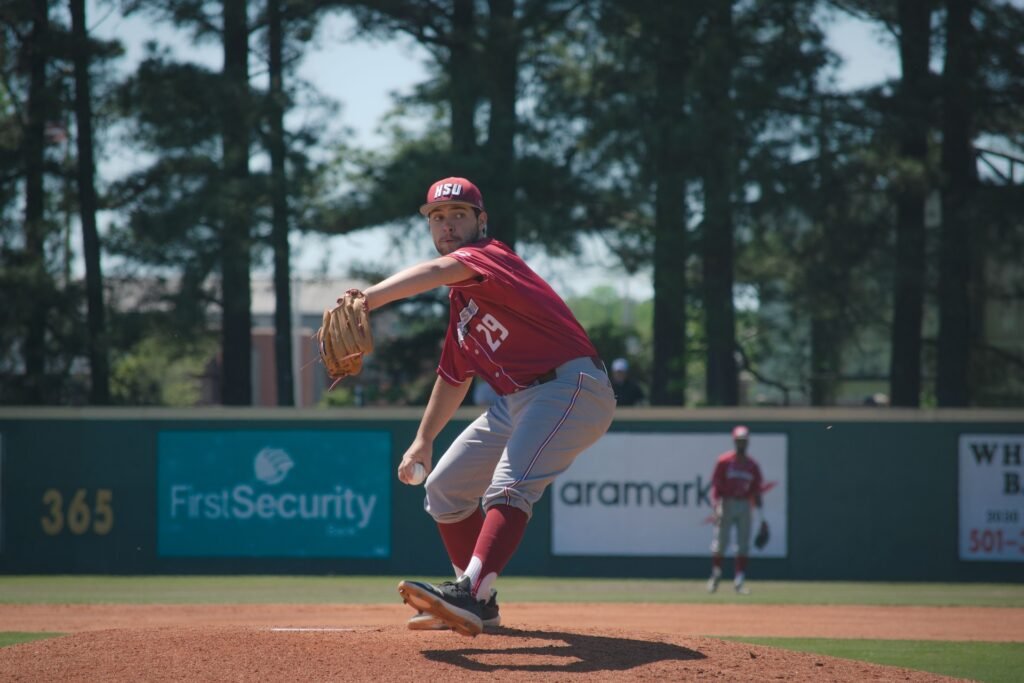what is a hold in baseball? Stunning Pitcher Stat 2024
- February 19, 2024
- 1
In baseball a “hold” is statistical category which is used to measure the effectiveness of relief pitchers. The pitcher can develop his or her skills by learning everything
In baseball a “hold” is statistical category which is used to measure the effectiveness of relief pitchers. The pitcher can develop his or her skills by learning everything

In baseball a “hold” is statistical category which is used to measure the effectiveness of relief pitchers. The pitcher can develop his or her skills by learning everything about what is a hold in baseball. It takes a lot of skills to pitch effectively. Therefore, it should be one of the most difficult positions to play.
Essentially, a hold acknowledges that the relief pitcher played a significant role in preserving the lead for his team, even though he did not finish the game or earn a save. It recognizes the importance of relievers who bridge the gap between the starting pitcher and the closer in high-pressure situations.
Let’s explore deeply what is a hold in baseball, when it occurs and what is the criteria of hold.
When a relief pitcher enters the game in a save situation and maintains the lead for the next pitcher, while recording at least one out, that is a hold. A hold is credited to a relief pitcher who meets the following criteria:
In the context of statistics, holds indicate a pitcher’s performance when he pitches late in the game and not as a closer. Pitchers who serve as relievers have the primary responsibility of not Leaving the lead. At least one out must be recorded during every save opportunity for the pitcher to record either a save, a blown save, or a hold to be recorded.

However, in a single game, more than one relief pitcher may register a hold. If a pitcher leaves the game with the lead and the runners left on base score the game’s tying and winning runs, the pitcher may suffer both a hold and a defeat.
To measure the efficiency of relievers who aren’t closers, statisticians John Dewan and Mike O’Donnell developed the hold in the 1980s. The statistic was intended to honor setup pitchers, who typically pitch the eighth inning before the closer takes the mound for the ninth inning.
The need for a new statistic arose as teams recognized the significance of relief pitchers who successfully maintained a lead but did not finish the game. These pitchers were often overlooked despite their vital role in securing victories for their teams.
To address this, the hold statistic was developed to acknowledge and credit relief pitchers for their efforts in these specific situations. It aimed to give them the recognition they deserved and provide a more comprehensive measure of their effectiveness.
The concept of a hold is based on the premise that relievers who enter the game in save situations and successfully maintain the lead until they are replaced have played a crucial role in their team’s success. By completing at least one inning of work and leaving the game with the lead intact or the tying run in a precarious position, these pitchers are acknowledged with a hold.

Since its introduction, the hold has become an important statistic in evaluating the effectiveness and impact of relief pitchers. It provides a more nuanced understanding of their contributions beyond saves and emphasizes the significance of their role in securing victories for their teams.
When a relief pitcher completes a game for the victorious team, the pitcher receives a save. A pitcher cannot win and record a save in the same contest. It is also a statistical category used to measure the performance of relief pitchers. It is awarded to a relief pitcher who meets certain criteria and successfully preserves a lead for their team.
To earn a save, a relief pitcher must satisfy the following conditions:
Additionally, a relief pitcher can earn a save in various situations, such as entering the game with the tying run on base, at bat, or on deck.
They both seem like same but the main difference between a “hold” and a “save” in baseball lies in the circumstances and requirements for each statistic.
A hold is credited to a relief pitcher who enters the game in a save situation (with a lead of three runs or fewer) and successfully maintains that lead until being replaced. The pitcher needs to complete at least one inning of work and doesn’t necessarily need to finish the game. The focus of a hold is on bridging the gap between the starting pitcher and the closer, helping to preserve the lead for the team.
On the other hand, a save is awarded to a relief pitcher who meets specific criteria to secure a victory for their team. To earn a save, the pitcher must enter the game with a lead of three runs or fewer, complete at least one inning, and preserve the lead without giving it up. The pitcher’s performance should ensure that the opposing team doesn’t tie or take the lead. A save is typically earned by the closer, who is responsible for finishing the game and preserving the victory.
In short, a hold recognizes the efforts of a relief pitcher who maintains a lead in a save situation without necessarily finishing the game, while a save is earned by a pitcher who finishes the game and successfully preserves the lead to secure a victory. The hold emphasizes the contribution of relievers in critical moments, while the save is specifically tied to closing out the game.
A closer in baseball is a relief pitcher who is primarily responsible for finishing games and protecting leads in the late innings. They are typically one of the most skilled and reliable pitchers on the team.
The closer’s role is to enter the game in the final inning or innings with a small lead and shut down the opposing team’s offense to secure a victory. Closers are known for their ability to pitch with composure under high-pressure situations and have a repertoire of pitches that can effectively deceive hitters and record the final outs of the game.
The hold is not acceptable as a formal statistical or scoring instrument. The reason why pitchers are some of the only ones who record the hold and not the official scorer is due to the absence of formal command of the hold. The hold serves as one’s merit in a way.
Certainly! In baseball, a relief pitcher may obtain a hold in the seventh inning. When a pitcher enters the game in a save situation, protects the lead, and pitches at least one inning before being relieved, the pitcher receives a hold.

The legitimacy of the hold is unaffected by the inning in which it is obtained. Therefore, a relief pitcher can be given credit for a hold if they effectively preserve a three-run or smaller lead until being relieved after entering the game in the seventh inning.
The most Major League Holds in a single season were set by Joel Peralta (41), and Tony Watson later equaled this mark in 2015. But in 2021, Tony Watson surpassed Arthur Rhodes’ all-time best 231 Hold (1991-2011) and took the lead for the entirety of his career with 235 Hold.

A hold in baseball is credited to a relief pitcher who enters the game in a save situation, completes at least one inning of work, and doesn’t give up the lead.
Yes, multiple pitchers can earn a hold in the same game. As long as each pitcher meets the criteria for a hold, which includes entering the game in a save situation, completing at least one inning of work, and preserving the lead, they can each be credited with a hold. It is possible for different relief pitchers to contribute to maintaining the lead in different innings of the same game, resulting in multiple pitchers earning a hold.
There is no specific limit to the number of pitchers who can earn a hold in a game. As long as each pitcher meets the criteria for a hold, they can be credited with one, regardless of the number of pitchers involved. It is possible for multiple relief pitchers to contribute to maintaining a lead in different innings of the same game, allowing for multiple holds to be awarded.
A hold is calculated when a relief pitcher meets the following criteria: entering the game in a save situation, completing at least one inning of work, and not earning a save by either leaving with the lead intact or the tying run on base, at bat, or on deck.
In conclusion, a hold in baseball is a statistic that recognizes the contribution of relief pitchers who enter the game in a save situation and successfully maintain the lead. It is calculated when a relief pitcher meets specific criteria such as completing at least one inning of work without earning a save.
The hold acknowledges the importance of relievers in bridging the gap between the starting pitcher and the closer, and it provides a comprehensive measure of their effectiveness.
1 Comment
[…] terms may be interesting to learn if you are new to baseball. FPS, Hold, ERA, and […]